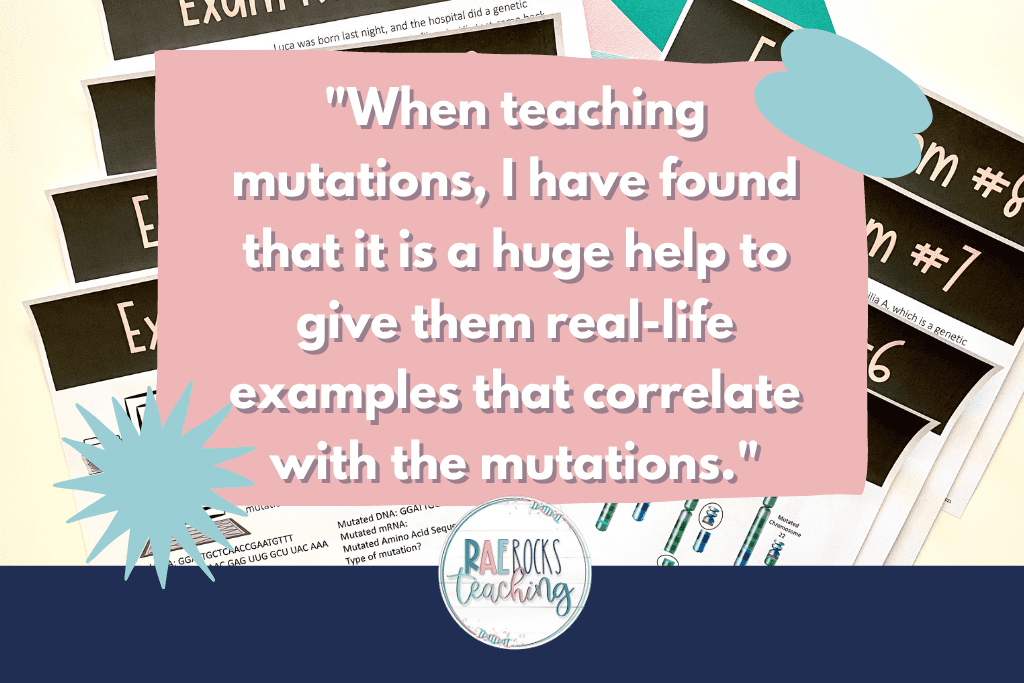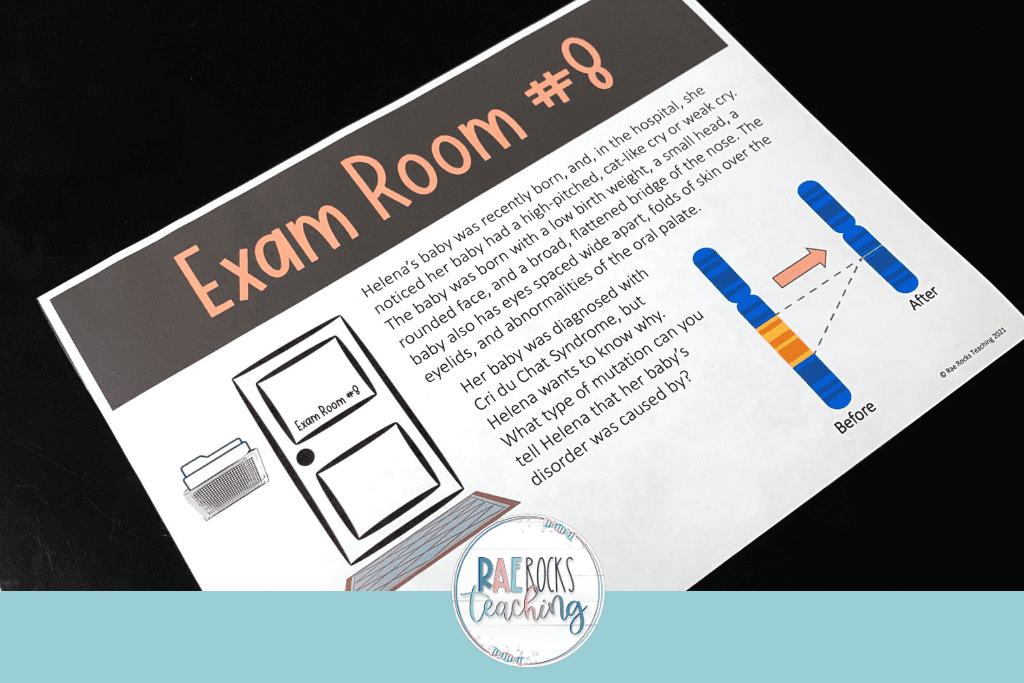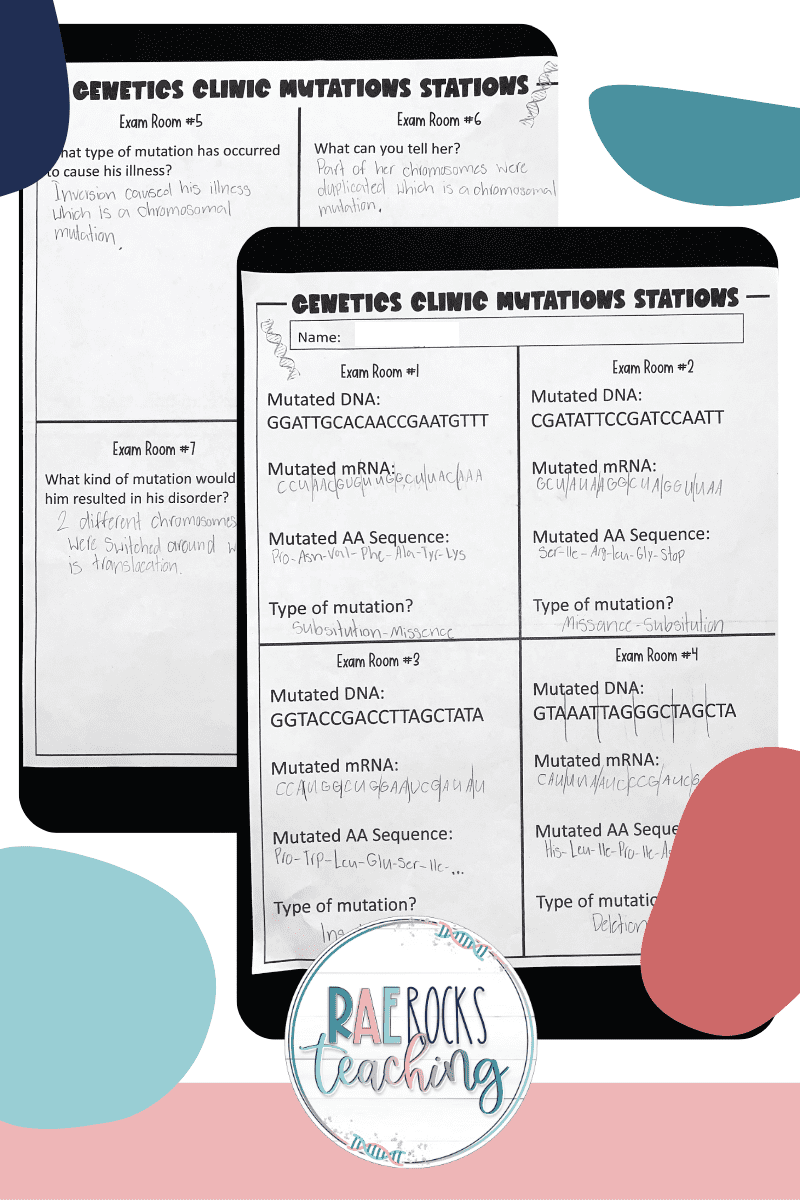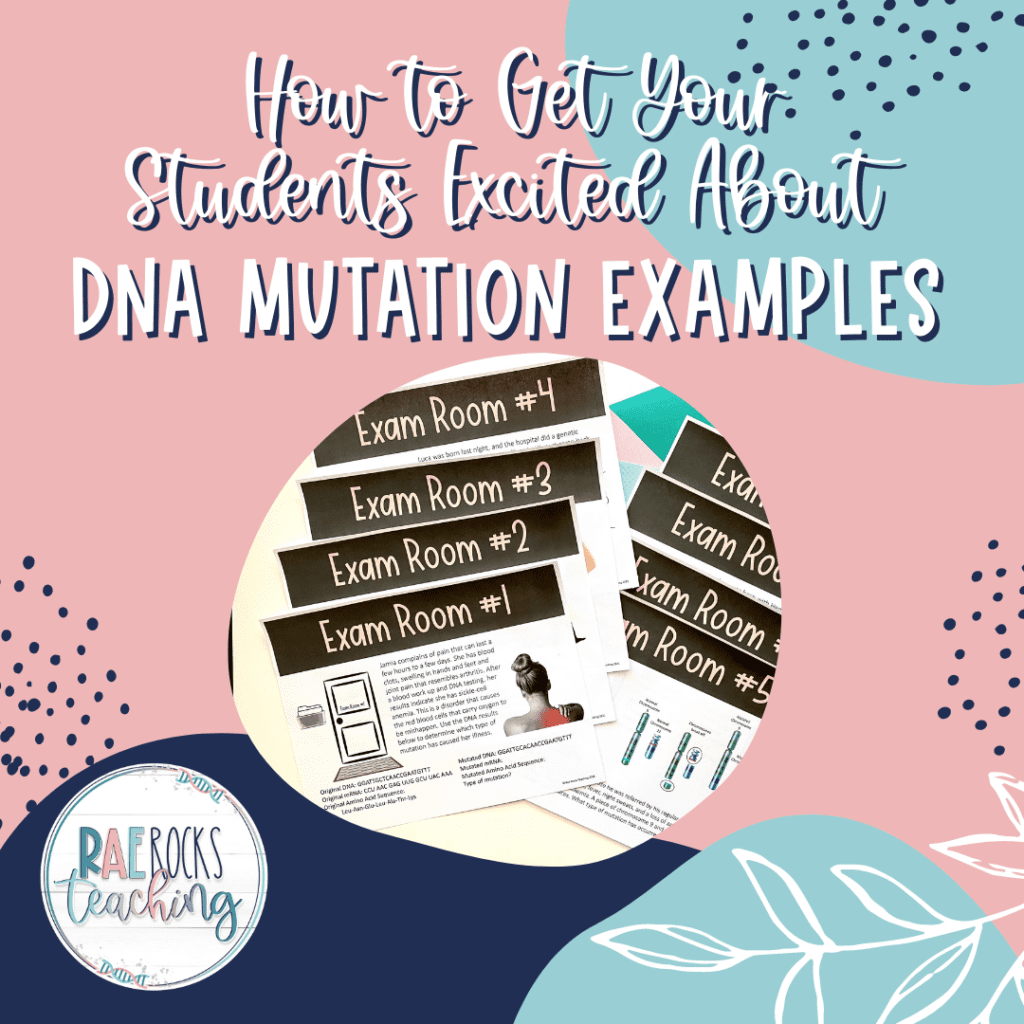Liven Up Your Mutation Examples
Do your students get bored doing the same mutation examples on a worksheet? I can so relate. I was in this boat not too long ago until I realized I could make practicing mutation examples more realistic. After you read this blog post, you are going to ask yourself why you didn’t do this sooner!
How incorporating Examples of Mutation Help Students
The main problem with teaching mutations is that it does not resonate with students. It is difficult for them to wrap their brain around this abstract concept. When teaching mutations, I have found that it is a huge help to give them real-life examples that correlate with the mutations. I also have found that when students have the ability to work together to solve problems, they actually learn and understand them better.

-
Save
Genetic Mutation Examples in Humans
In my early years of teaching genetic mutations, students would ask me what types of diseases or disorders mutations caused. There are so many examples I gave that were super specific, however, they did not quite resonate. If I really wanted students to discover mutation examples, I had to relate them to the mutation types we were specifically learning.
I first started just having students do some research and looking up some mutation examples. This answered their question but did not quite do what I wanted. I wanted students to practice the mutations while also learning about the types.
I was scrolling Instagram and I saw a teacher who was having her students play the role of a doctor to diagnose cell disorders. A lightbulb went off and I got to work.
Examples of Mutations

-
Save
I took this idea and made it unique to what I wanted. I decided to have the students take on the role of a Geneticist that would visit patients with genetic mutations. Each patient would be a station, totaling 8 stations. Each station covers a different type of mutation and has a patient story to accompany it. Students would go to each station to work through the genetic mutation using the Original DNA and comparing it to the Mutated DNA. They would then look up the amino acid sequence before diagnosing the type of mutation that caused their illness.
I researched many different examples of mutations and created stations for each type.

-
Save
Why Use Stations for Mutation Examples
I am a HUGE fan of stations. I like the interactive aspect that they provide. Students are given tasks at each station and they vary with each rotation. If students get stuck on something, they have a group to help them work through it. It allows for socialization, but they are learning from each other. As I rotate around the room while they are working, I am always amazed at how helpful they can be to one another. Sometimes another student explaining something to them in a different way makes the lightbulb finally come on and they get it.

-
Save
I like the idea of using a station for students to rotate through for genetic mutation examples in humans because it brings a more realistic component into the mix. By students taking on the role of a Geneticist, it confirms they are experts. This is a great mindset trick. Having them “see” patient in various rooms allows them to pretend they are a doctor, which is something many kids strive to become.
Ways to Use These Stations
I have used these stations to enhance the lesson on mutations that I teach them. Here are several different ways you could include these in your classroom.
- Allow students to work through the stations as an inquiry activity. This would require students to have a cheat sheet or some very basic knowledge of mutations. Providing notes to the students allows them to work and look up the information while at each of the stations. This would work best for your above-level learners because it provides them with a challenge. It can definitely be done with lower-level learners but may take some guidance.
- Teach the mutations to the students via lecture, then have them do the mutation stations. This reinforces the content that was taught along with providing excellent real-life examples to practice identifying the mutations.
- Use the mutation examples stations as a review prior to an exam. This would be a great way to come back to the content that was taught and refresh their memory.
Go beyond the required standards
This activity goes beyond the required standards for most states. This extension piece will push students to think beyond what they “need” to know and truly build a knowledgeable individual. The standards are just a base and it’s our job to not only teach the standards but go beyond that. I love to provide more than what is required to the students because I want them to truly understand these topics. I also want to help them make those connections between each unit.
Best Practices for running stations
I have a large class which most teachers do these days, so I had to come up with a seamless way to run stations in my classroom.
First, I said all of the stations evenly spaced out between the lab tables that I have in my classroom and even taped some stations to the walls.
Second, I divided my students into equal groups pairing them based on abilities and personalities.
Next, I used a timer for the stations approximately six minutes for each and they were not allowed to rotate until the timer went off.
If you have an extraordinarily large class, say over 32, I would recommend adding a rest station in between some of the stations in order to accommodate for smaller groups.
Note: The point mutations take longer to solve than the chromosomal mutations. So you could also put two chromosomal mutations at one station in order to keep kids busy while at those stations.

-
Save
Grading the stations
Grading the stations is super easy since I print out my answer key and keep them right next to me. Each of the stations only requires 1 to 2-word answers so it takes no time to get them graded with feedback in a short amount of time. I used these as a formative assessment in order to gauge whether I need to reinforce certain topics or we could move ahead with the contact. In the past, I have given a quiz after completing the stations and find that students perform very well on the quiz as a result of diving deeper into examples of mutations.
My hope is that you feel energized about incorporating stations for examples of mutations into your classroom. It doesn’t have to be boring and can totally be student-driven. If you are overwhelmed by trying to do all the things, then I totally get it! I gotcha covered. Snag the Genetics Mutations Lesson to save tons of time. Better yet, GRAB THE DNA MUTATIONS BUNDLE and get access to the notes, graphic organizers, & more!
I absolutely love sharing with y’all and would love to connect on IG or Facebook. Follow me and send me a DM with what you need more of because I’m here to help! If you are looking for even more inspiration, find me on Pinterest!

-
Save
More great articles to liven up your classroom!
The Best Way to Teach Students How to Use the Dichotomous Key
The Best and Most Fun Way to Prepare Students for Biology Finals
7 Easy and Effective Strategies to Check for Understanding
Share via:









3 Responses